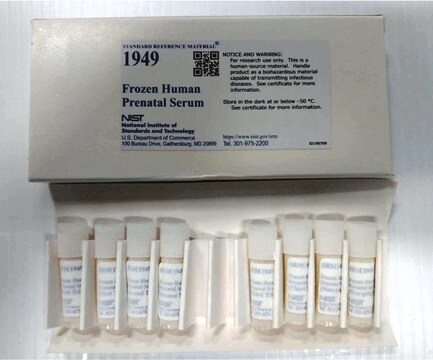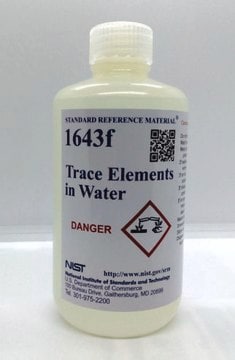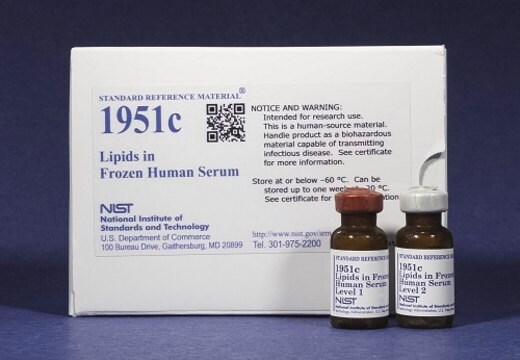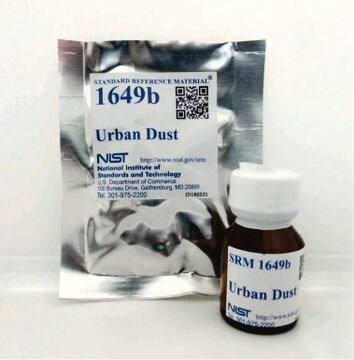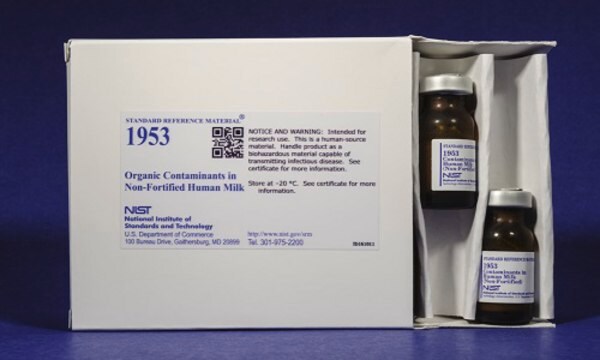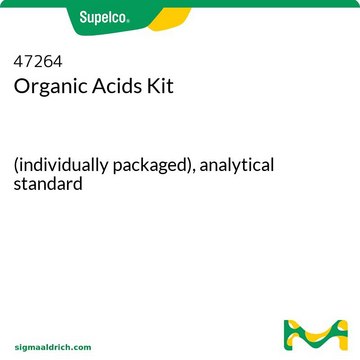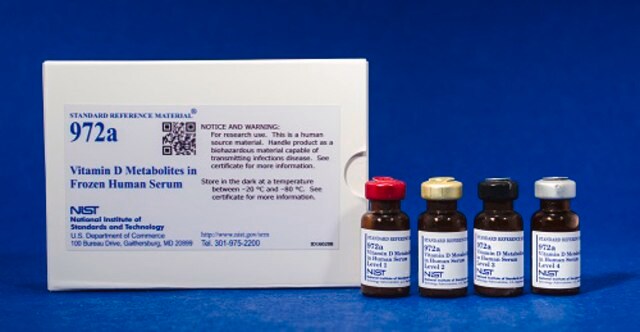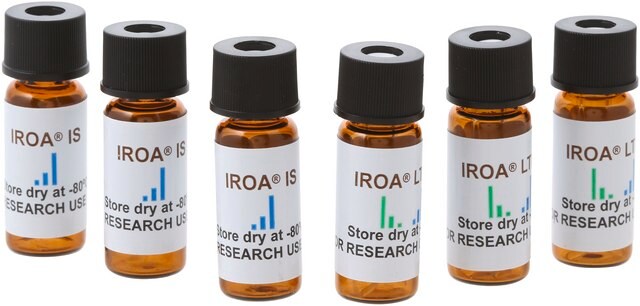NIST1950
Metabolites in human plasma
NIST® SRM® 1950
Synonim(y):
Metabolity ludzkiego osocza
About This Item
Polecane produkty
klasa czystości
certified reference material
Poziom jakości
Formularz
liquid
opakowanie
pkg of 5 x 1 mL
producent / nazwa handlowa
NIST®
metody
gas chromatography (GC): suitable
liquid chromatography (LC): suitable
mass spectrometry (MS): suitable
Zastosowanie
clinical research
Format
matrix material
Opis ogólny
It was developed in a collaboration between the National Institute of Standards and Technology (NIST) and the National Institutes of Health (NIH) National Institute of Diabetes and Digestive and Kidney Diseases (NIDDK). Analyses for value assignment were performed by NIST and the Centers for Disease Control and Prevention (CDC) (Atlanta, GA). All certified and reference values, with the exception of vitamin D-binding protein, are based on the agreement between the results from NIST methods and from the CDC, where available. The reference value for vitamin D-binding protein is based on the agreement between the results from a NIST method and the University of Washington method.
SRM 1950 _SDS
SRM 1950_CERT
Zastosowanie
The standard has been used:
- to determine the accuracy of vitamin D in human serum by liquid chromatography-tandem mass spectrometry (LC-MS/MS)
- to determine the unbound free fatty acid profile of human plasma
- to determine the C24 bile acids in human serum and urine samples by liquid chromatography-mass spectrometry (LC-MS) method
Cechy i korzyści
- A unit of SRM 1950 consists of five vials, each containing approximately 1.0 mL of plasma
- The associated uncertainties are expressed at the 95 %level of confidence
- Information on product description, disposal, and transportation is available in the accompanying MSDS
- The enclosed NIST certificate contains details on the expiry date, warning to users, instructions for right storage and use, preparation, and analysis of the RM
Informacje prawne
produkt powiązany
Kod klasy składowania
13 - Non Combustible Solids
Klasa zagrożenia wodnego (WGK)
WGK 3
Wybierz jedną z najnowszych wersji:
Certyfikaty analizy (CoA)
It looks like we've run into a problem, but you can still download Certificates of Analysis from our Dokumenty section.
Proszę o kontakt, jeśli potrzebna jest pomoc Obsługa Klienta
Masz już ten produkt?
Dokumenty związane z niedawno zakupionymi produktami zostały zamieszczone w Bibliotece dokumentów.
Klienci oglądali również te produkty
Global Trade Item Number
| SKU | GTIN |
|---|---|
| NIST1950 | 4061834140726 |
Nasz zespół naukowców ma doświadczenie we wszystkich obszarach badań, w tym w naukach przyrodniczych, materiałoznawstwie, syntezie chemicznej, chromatografii, analityce i wielu innych dziedzinach.
Skontaktuj się z zespołem ds. pomocy technicznej
